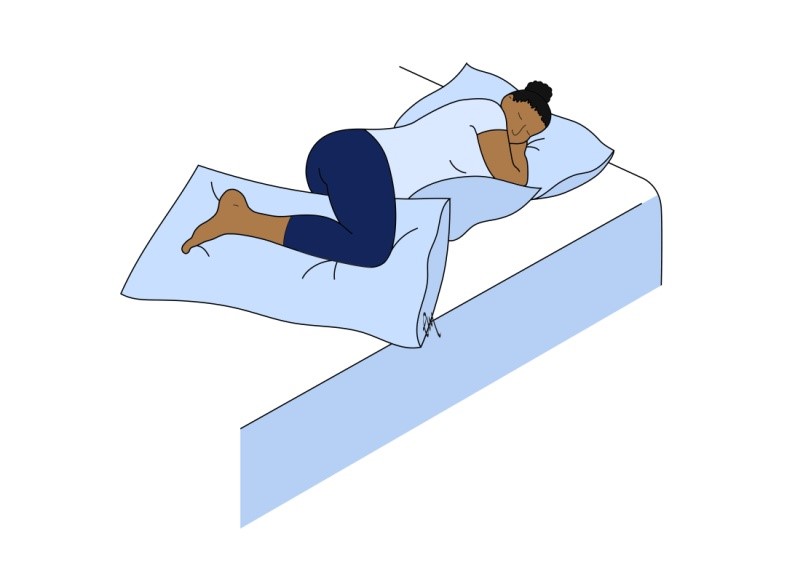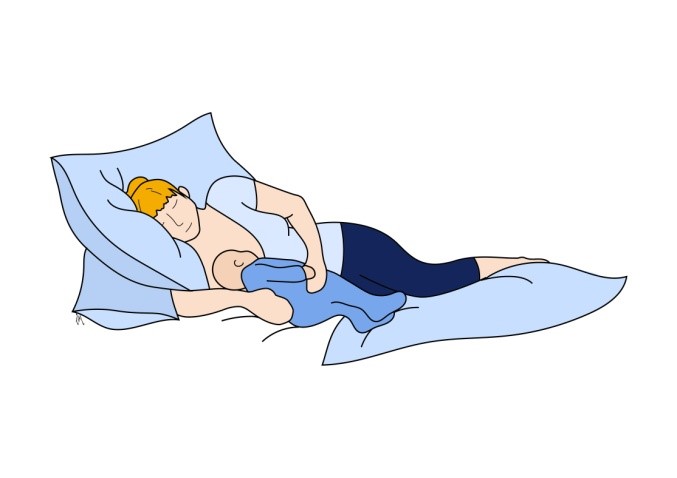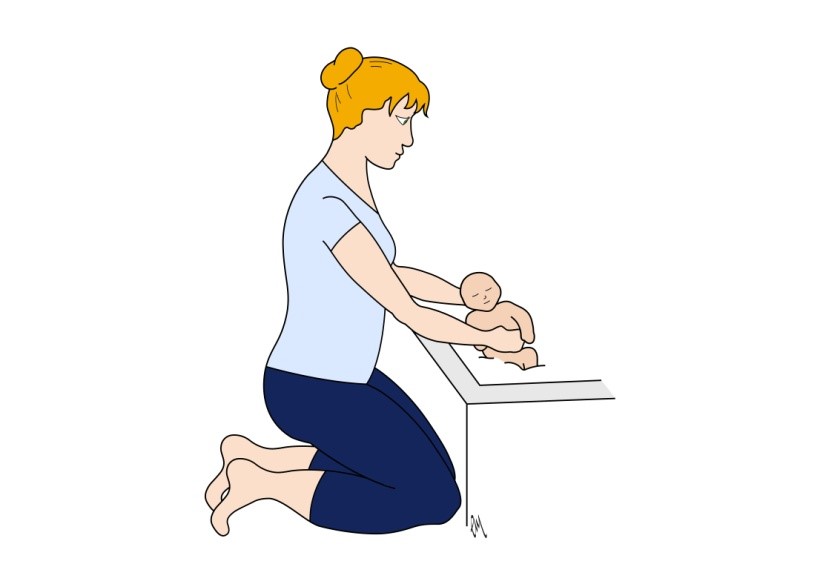Recovery after having a caesarean section
Explanation of common symptoms/ problems
A caesarean section is a major operation and will take several weeks to recover from (it generally takes longer than if you have had a vaginal birth). It is therefore important that you can have time to rest but also know what to do to help your body recover. This webpage will provide you with information to help you with your recovery.
Approximately 25% of women in the UK have their baby by caesarean section. This may be due to:
- Your baby being in the breech position in late pregnancy
- A low-lying placenta (placenta previa)
- High blood pressure in pregnancy (pre-eclampsia)
- Certain infections in late pregnancy
- Not enough oxygen and nutrients getting to your baby
- Labour not progressing
- Your choice (due to different concerns about birth or having had a previous caesarean)
In the first week or two after having a caesarean it is common to experience discomfort or even pain when getting in/out of bed, walking any distance, carrying out any activities that cause strain on your tummy and when going to the toilet to pass urine or open your bowels. This is because of the wound in your tummy and womb and how your tummy muscles, bladder and bowel have been moved around during surgery. Having an anesthetic and pain medication can also leave you feeling more tired than usual and can sometimes cause sickness.
Usually the wound heals well and scar tissue will form within 3-4 weeks. A few women may get a wound infection, so if your pain is not settling, the wound becomes hot and red or you notice a discharge from your wound, tell your GP or midwife straight away. As the scar forms it can leave a strange numb feeling over it. For a few women too much scar tissue can form and leave the scar feeling tight and sore.
You may notice or have been told by a midwife or physiotherapist that your tummy muscles have separated during your pregnancy. This is known as diastasis rectus abdominus muscle or DRAM. Having a DRAM as well as a caesarean can leave your tummy muscles along with your pelvic floor muscles feeling very weak. Follow the link to DRAM to find out more and what to do about it.
Self help / Advice
In the first couple of days after your caesarean, whilst you are still in hospital, it is important to start moving as soon as possible. This will help with your circulation and breathing and stop your muscles and joints becoming too stiff and sore. You will be given some pain relief to help you move more easily and it is important to keep taking this at regular intervals.
You will have a catheter in your bladder for approximately 12 hours after your caesarean. It is important that you start eating and drinking normally as soon as you can so that once the catheter is removed you can start passing urine on your own. If you are having problems passing urine in the first few hours after your catheter is removed, tell your midwife.
It is normal to pass urine every three to four hours. Try to avoid going to the toilet ‘just in case’ see top 10 tips.
Eating and drinking normally will also help your bowels to work although it can be a couple of days after birth before this happens. It is important to avoid constipation as straining to empty your bowels will put pressure on your wound and pelvic floor muscles, which isn’t helpful for their recovery. Follow the link for Healthy Bowels.
Your wound dressing will come off after a couple of days. It is fine to have a bath or shower as soon as you feel able to after birth. Wash over your wound with warm water, avoiding too much soap/ body wash over the area. It is important to keep the area clean and dry.
Here are some suggestions for comfortable resting/ sleeping positions.


It should also be easier to get in and out of bed by gently rolling onto your side (Follow the link to Fit for the Future leaflet).
Do some deep breathing in the first couple of weeks after having a caesarean (three slow breaths one after the other). This will help to get more air into your lungs and help to relax your tummy muscles. Placing a pillow or towel over your tummy and supporting it will help to make it feel more comfortable when you cough, sneeze or open your bowels.
Where possible avoid doing activities that put strain on your tummy. It is best to lift nothing heavier than your baby for the first 6 weeks. If you have a toddler that does need to be lifted and carried try to do this only when necessary, encourage them to stand on a step or high surface for you to lift them from and bend from your knees keeping your back straight (see diagram).

Once your wound has healed over and the scar tissue has formed you can start to gently massage over it. You can use an oil such as coconut or bio oil whilst massaging. Try to do this every day. It will help to reduce sensitivity and/or tightness of the scar tissue.
Avoid driving for 4-6 weeks. When you do decide to drive, make sure that you are covered by your insurance company and that you feel comfortable performing an emergency stop if it is needed.
It is good to do some gentle exercise in the first 6 weeks after your caesarean. Start your pelvic floor muscles exercises as soon as is comfortable after your catheter is removed. There are also some gentle tummy exercises that you can do (see Fit for the Future booklet) These exercises are suitable to do even if you have a DRAM. And walking is a good form of exercise. Just remember to build speed and distance up gradually as it feels comfortable.
If you are feeling well after your 6-8 week postnatal check with your GP you can start some brisk walking and start swimming. Don’t start back with high impact exercises too soon such as running, Zumba, cross fit. (see link to postnatal running guidelines below).
Return to sexual intercourse when you feel ready and have arranged which contraception to use. Start gently and you may find it helpful to use a water-based lubricant for comfort.
Where to go next
If you are experiencing any of the problems mentioned on this page discuss them with your GP or midwife. It may be that seeing a specialist women’s health physiotherapist will be helpful to you. Your GP or midwife can refer you or in some locations you can refer yourself. The POGP may also be able to put you in touch with a women’s health physiotherapist near to where you live.
Find a Physiotherapist
Other good sources of information:
What to expect from physiotherapy
A women’s health physiotherapist can help you with several problems after a caesarean such as:
- DRAM
- Low back pain or pelvic girdle pain
- Urinary incontinence or faecal incontinence
- Pain from your caesarean scar
- Problems with returning to sex
- General difficulty getting back to daily activities or exercise